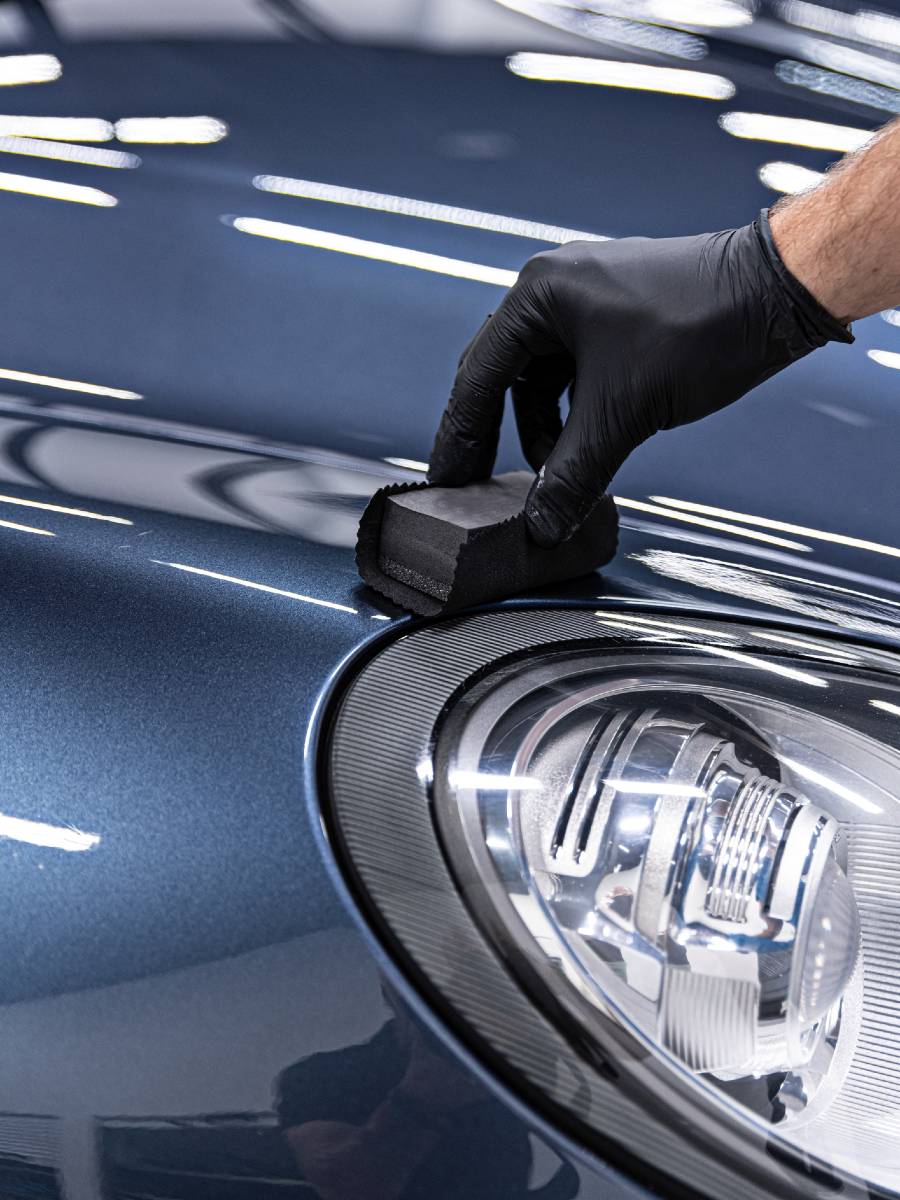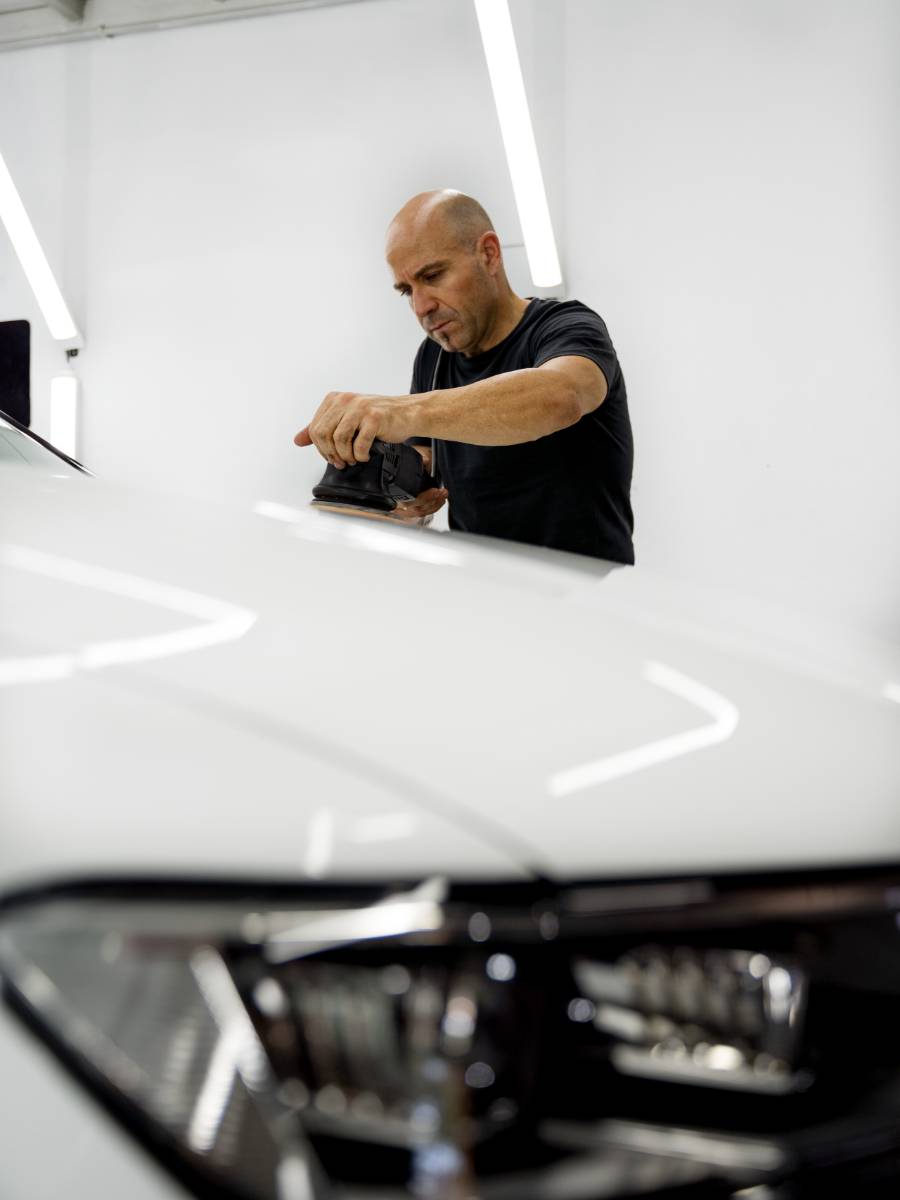Ceramic Coating vs Traditional Wax: Which Offers Better Protection?
Ceramic Coating vs Traditional Wax: Which Offers Better Protection?
Blog Article
Ceramic Covering vs. Traditional Wax: Which Gives Better Long-Term Protection?
The discussion between ceramic coverings and conventional wax for car defense has gathered significant focus among automobile fanatics and professionals alike. Ceramic finishings flaunt premium durability and resistance to ecological factors, yet the complexity of their application elevates questions regarding accessibility and functionality.
Review of Ceramic Finishing
Ceramic layer has obtained significant popularity among auto enthusiasts and detailers alike because of its sophisticated protective top qualities. This ingenious innovation is developed to create a durable, hydrophobic shield over a car's paint surface, dramatically improving its resistance to ecological impurities such as dirt, UV rays, and chemical spots. Unlike standard wax, which supplies a short-lived layer of defense, ceramic finishings bond at a molecular degree with the paint, supplying durable durability-- frequently extending past 2 years with proper upkeep.
The application procedure includes careful prep work of the lorry's surface area, consisting of cleaning and polishing to make certain optimal adhesion. As soon as applied, the finish remedies to form a durable layer that not just adds depth and gloss to the paint yet likewise simplifies upkeep. With its hydrophobic residential properties, ceramic finish enables water and dirt to glide off more easily, reducing the regularity of laundries and reducing the risk of swirl marks.
Moreover, ceramic coatings are offered in different formulations, allowing customers to pick products tailored to their certain requirements and choices. Generally, ceramic covering stands for a considerable advancement in paint security technology, providing premium performance contrasted to conventional choices.
Overview of Standard Wax
Traditionally related to as a staple in automobile treatment, wax acts as a preferred option for those looking for a simple approach to boost and safeguard their vehicle's paint - ceramic coating. Automotive wax usually comprises all-natural components, such as carnauba, or synthetic substances, made to create a protective layer externally of the paint. This layer not just boosts the vehicle's gloss and beam but also gives an obstacle against ecological impurities
The application of wax is generally user-friendly, making it obtainable for both experts and DIY enthusiasts. It can be used by hand or device, enabling versatility in the outlining process. When applied, wax calls for a healing duration, after which it hardens to develop a protective covering. Wax is likewise understood for its capability to drive away water, advertising a beading result that helps in the prevention of water areas and rust.
Nonetheless, while wax is reliable for enhancing the aesthetic appeal of a lorry, it is important to note that the protection it offers might require more constant reapplication contrasted to alternate products, such as ceramic coverings. In general, traditional wax continues to be a preferred option for those focusing on simplicity of use and immediate aesthetic renovation.
Durability and Long Life Contrast
While both ceramic layers and conventional wax offer protective benefits for automotive paint, their sturdiness and durability vary substantially. Conventional wax, typically made from natural carnauba or artificial polymers, typically supplies a safety layer that lasts roughly 3 to 6 months. This fairly brief life-span necessitates normal reapplication to maintain ideal protection.
In contrast, ceramic coatings are engineered from innovative nanotechnology, forming a covalent bond with the paint surface area. This causes a durable, hydrophobic layer that can withstand for two to 5 years, depending on the product and environmental problems. The premium sturdiness of ceramic coatings is associated to their chemical framework, which supplies enhanced resistance to scratches, UV rays, and oxidation.

Security Versus Ecological Variables
Safeguarding a lorry's paint from environmental variables is important for maintaining its appearance and value over time. Cars are constantly subjected look at this site to a variety of aspects, including UV rays, bird droppings, tree sap, acid rainfall, and roadway grime, every one of which can compromise the stability of the paintwork.
Ceramic coatings supply a robust protection versus these environmental assailants. Unlike standard wax, which can deteriorate quickly under UV direct exposure, ceramic coatings create a long lasting, hydrophobic layer that resists the harmful results of sunshine and toxic wastes. This advanced technology produces a chemical bond with the automobile's surface, using premium protection that lasts for years, even in extreme problems.
Typical wax, while easier to apply, usually needs constant reapplication and supplies limited resistance to pollutants and UV rays. With time, it can damage down, leaving the paint at risk to scratches and oxidation. In contrast, ceramic coverings preserve their protective top qualities much longer, substantially lowering directory the danger of paint damage and making sure that the automobile preserves its visual charm. As a result, ceramic finishes are progressively acknowledged as the exceptional choice for long-term defense against ecological factors.
Application and Upkeep Distinctions
The methods of application and subsequent upkeep for ceramic layers and conventional wax differ substantially, influencing the total user experience and effectiveness of each product. Ceramic finishings need an even more complex application procedure, commonly involving surface preparation that includes washing, decontaminating, and brightening the vehicle. When the surface is prepared, the ceramic covering is applied in a regulated atmosphere, often requiring expert know-how to make certain correct healing and bonding to the paint.

While both products improve vehicle appearance, the longer-lasting defense used by ceramic coverings might justify their preliminary financial investment, despite the even more requiring application process. Alternatively, conventional wax remains a prominent selection for those seeking a less complex, albeit short-term, remedy.

Conclusion
In verdict, ceramic coatings demonstrate significant benefits over traditional wax in regards to durability and environmental management. With a life expectancy prolonging two to 5 years and superior resistance to UV rays, dust, and chemical spots, ceramic finishings use an extra effective option for long-term car upkeep. Although the application procedure may require professional knowledge, the resulting expense savings and decreased regularity of reapplication highlight the value of ceramic finishings for those looking for ideal car security.
The dispute between ceramic coatings and typical wax for automobile security has actually amassed considerable interest among automobile lovers and experts alike. Unlike standard wax, which gives a momentary layer of protection, ceramic coverings bond at a molecular degree with the paint, offering durable resilience-- usually prolonging beyond 2 years with correct maintenance.
While both ceramic layers and conventional wax deal safety benefits for automobile paint, their durability and durability vary substantially. For vehicle fanatics seeking long-term security, ceramic finishings present an engaging advantage over standard wax products.
In final thought, ceramic finishings show significant benefits over standard wax in terms of sturdiness and environmental security.
Report this page